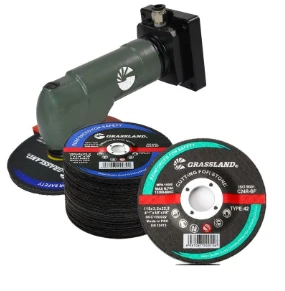Using Flap Discs to Remove Rust A Comprehensive Guide
Rust is a common problem that many DIY enthusiasts and professionals face when dealing with metal surfaces. It forms when iron reacts with moisture and oxygen, leading to deterioration of the metal. Addressing rust is essential to maintain the integrity of the material and prevent future corrosion. In this context, flap discs have emerged as one of the most effective tools for rust removal. This article will explore what flap discs are, how they work, and the best practices for using them to remove rust.
What are Flap Discs?
Flap discs are abrasive tools designed for grinding, finishing, and blending surfaces. They consist of multiple overlapping layers or flaps of abrasive material, usually powered by aluminum oxide or zirconia. These flaps are attached to a central backing plate, which can be mounted on a standard angle grinder. Flap discs come in various grits, allowing users to choose the right one for their specific tasks, such as rust removal, surface preparation, or metal finishing.
How Do Flap Discs Work?
When using a flap disc, the overlapping flaps work together to create a smoothing action as they rotate against the surface of the metal. The angled design of the flaps allows for better surface contact, providing efficient grinding and finishing with minimal loading. As the abrasive material wears down, new flaps are exposed, ensuring a consistent cutting action. This design helps reduce heat build-up, extending the life of both the disc and the tool, making it a popular choice among metalworkers and DIYers alike.
Choosing the Right Flap Disc for Rust Removal
To effectively remove rust using a flap disc, it is crucial to select the appropriate type and grit. For rust removal, coarser grits (around 40-60) are typically recommended. These grits provide the aggressive cutting action necessary to tackle tough rust spots. However, if you are working on a more delicate surface or want to achieve a smoother finish afterward, you may opt for finer grits (80-120) for finishing the surface after the initial rust has been removed.
flap disc to remove rust

Best Practices for Using Flap Discs
1. Safety First Always wear appropriate safety gear, including goggles, gloves, and a dust mask. This will protect you from flying debris and fine dust generated during the rust removal process.
2. Preparation Before starting, ensure that you have a clean, clutter-free workspace. Secure the metal piece you will be working on to prevent it from moving during the grinding process.
3. Technique Hold the angle grinder with both hands for better control and stability. Start at a moderate speed and use light pressure, allowing the flap disc to do most of the work. Move in controlled, sweeping motions to cover the rusted areas evenly.
4. Inspecting Progress Periodically stop to check your progress. This helps prevent over-grinding and damage to the underlying metal. If you notice that the flap disc is wearing out, replace it to maintain optimal performance.
5. Post-Processing After removing the rust, consider using a finer grit flap disc to achieve a smooth finish. Additionally, applying a protective coating or rust inhibitor can help prevent future rust formation.
Conclusion
Flap discs are a powerful and versatile tool for removing rust from metal surfaces. When chosen correctly and used with proper technique, they can restore the appearance of the metal and prolong its lifespan. Whether you are restoring a vintage car, preparing tools, or renovating metal furniture, flap discs can help you achieve professional results with ease. Remember to prioritize safety, choose the right grit, and practice proper technique to make the most of your flap disc and effectively eliminate rust.
Post time:Dec - 19 - 2024

















